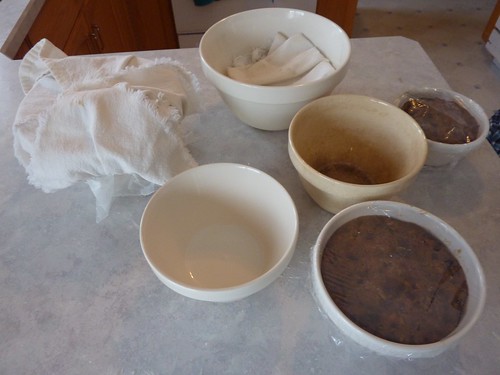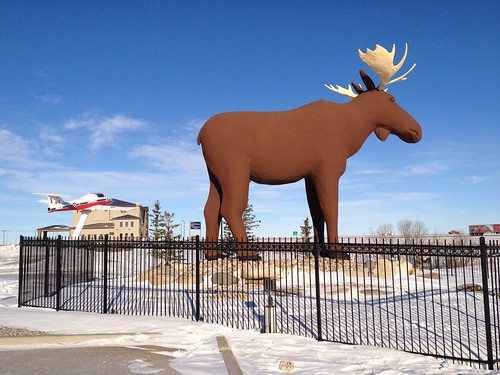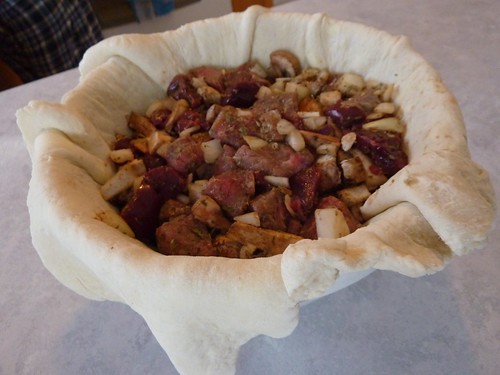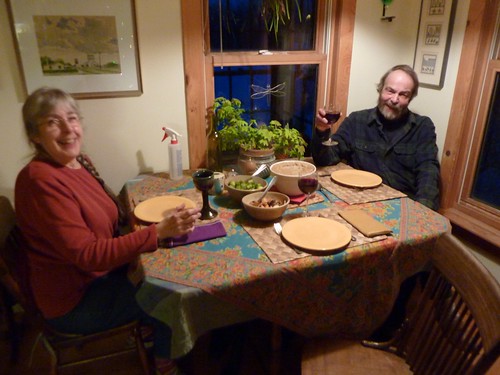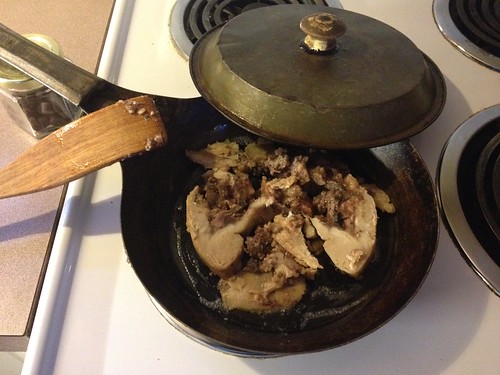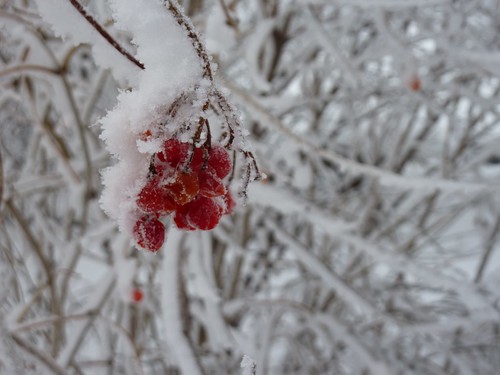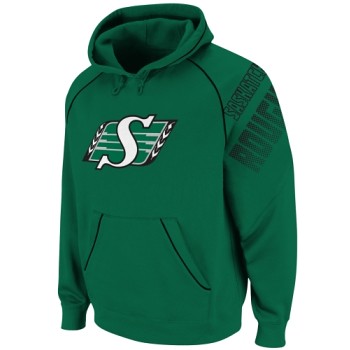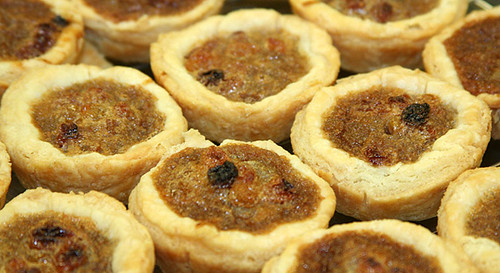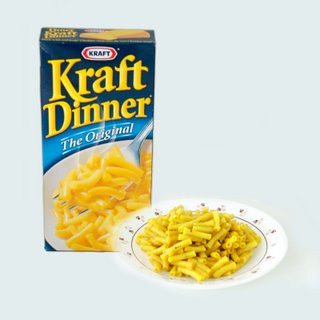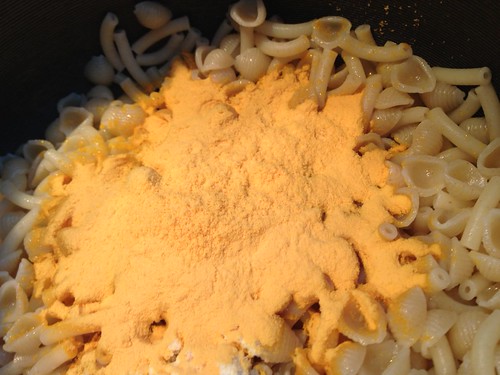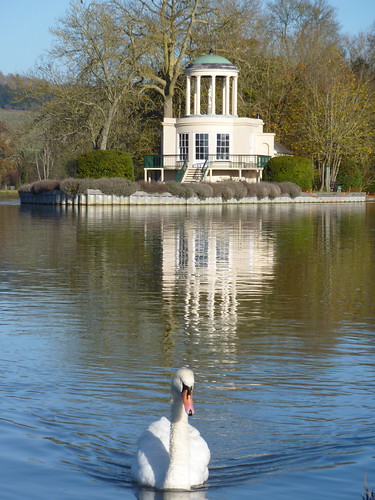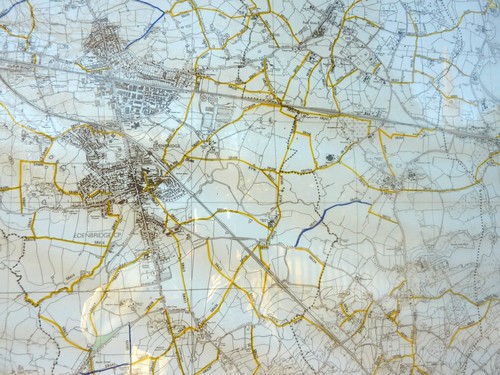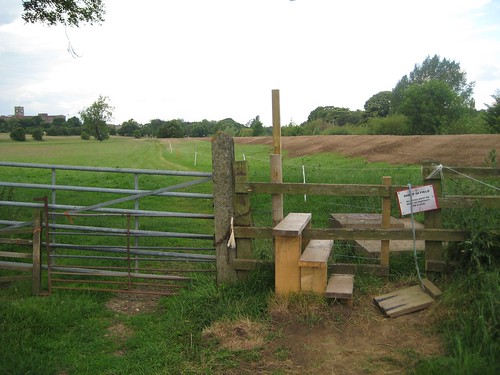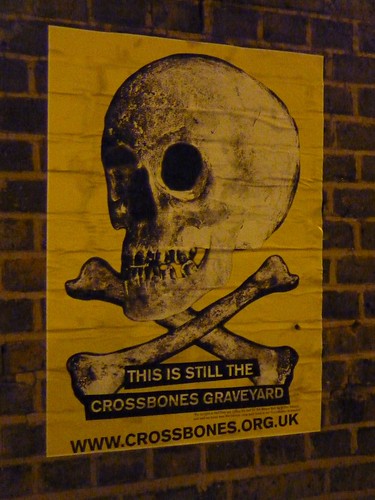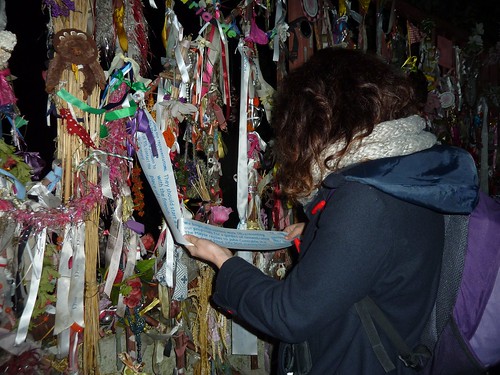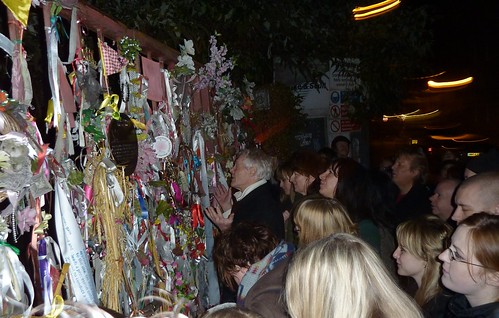There are some foods you need to grow up with in order to really love them. I think sardines fall into this category. And Marmite, which we've talked about before. Today, in our special Home For The Holidays edition of Grub! we're going to dive into another of those treats. It's one that regularly causes the uninitiated to wrinkle their noses in disgust, which is just fine with me since it leaves more for those of us who know and love the delicacy. Today's topic: steak and kidney pudding!
My four UK readers can skip this next bit, but those of you tuning in from North America might need a bit of a primer on pudding in its English sense. If you grew up in North America and didn't happen to have a whole side of your family that brought over many English foods and traditions when they hopped on the boat in 1950, then in your limited experience probably pudding refers only to a very specific sort of chilled milky gelatin-based sweet dessert flogged by Bill Cosby and popular in lunch boxes. Thus you might be slightly horrified at the thought of a bowl of chocolate pudding with chunks of beef and kidney floating in it. Fear not! In England the term pudding encompasses soooo much more than just the gloopy dessert.
(Jell-O related aside: In England, the neon-coloured clear wobbly stuff that we'd call Jell-O is generically called "jelly". And what do they call jelly? Weirdly, there is no specific word for the seedless fruity breakfast spread over here. Jelly just gets lumped in heartlessly under the "jam" label, which seems sad.)
But back to pudding. In one sense, "pudding" refers to the entire panoply of sweet stuff you might have at the end of a meal. In fact, the course called dessert is often called pudding here, which I find just charming. As in, "What's for pudding, mum?" (Another aside: It's definitely Mum with a U in England, not Mom with an O. And you can really hear the difference.) Sadly, the term pudding is slowly being supplanted by dessert, which I also find kind of sad. It's like hearing "fries" instead of "chips" or "cookies" instead of "biscuits" and feels like the last small tumble in the fall of the Empire.
More specifically, "pudding" can refer to a whole family of cakey sort of things that are cooked by steam, and can include both sweet and savoury options. Christmas pudding is probably the best known pudding out there, but other favourites include the most excellent Sticky Toffee Pudding, and the giggle-inducing Spotted Dick. On the savoury side the most famous is probably Yorkshire pudding, though it's not steamed but rather baked, so don't ask me why it's called pudding. Just accept that there's room for everybody under the pudding umbrella and be thankful if you've got a nice Yorkshire pudding on your plate, especially if there are lashing of gravy to go with it.
Steak and kidney is a favourite flavour combination that appears most frequently in pies. (Though even in England it's more likely you'll find steak and ale pie than steak and kidney.) In the pudding variety, the yummy filling of steak, kidney, onion, gravy and mushrooms is prepared in a pudding basin that's lined not with a standard pie-like pasty but a suet crust. Suet is the particular sort of fat that surrounds the kidneys and loin of cows, lamb and pigs and has a very high melting point, making it excellent for deep frying and pastry work. (It is also astonishingly high in saturated fat - 52% - so please don't plan on having it every day.) A suet crust consists of flour, ground suet, baking powder, a bit of salt and water, making a sticky dough that is used to line a pudding basin. The crust is then filled, covered in boiling water to seal the meat (and, critically, produce the gravy) topped with a lid of more suet crust and sealed up.
Steak and Kidney - or "cake and sidney", as it was often known in my house, in a sort of warped semi-Cockney rhyming slang / malapropism-ish way - was a favourite Sunday supper that used to appear fairly regularly through the winter, and especially on Christmas Eve. The Christmas Eve cake-and-sidney has the excellent advantage of producing, with any luck, enough leftovers that it can be sliced and pan-fried for a breakfast on Christmas morning. (At this point I realise that I'll have lost most of you who barely managed to hang on through the supper concept and again I say, "Go ahead and run, coward! You don't know what you're missing!")
The Christmas Eve steak and kidney puddings of my childhood were always made by my grandmother in Moose Jaw. (To all UK Readers: Yes, Moose Jaw. And don't you get goofy about Saskatchewan place names because anyone who comes from a country with places called Boggy Bottom and Spitalin the Street frankly does not have a leg to stand on when it comes to mocking other people's place names.)
Now that Grammy's gone the Pudding Master mantle has been taken up by my aunt Linda, who produces both the steak and kidney and Christmas puddings, based on Grammy's recipes from about 1920. I've been thinking for a while that I need to blog about steak and kidney pudding, and I'd intended to attempt one in London at some point. However, when I realised I could actually suck Lin into helping me, making use not only of her extensive pudding acumen but also her ample wardrobe of pudding basins, it seemed eminently sensible to give it a go while I was home. So it was that I pitched up at Linda's house on the Sunday morning before Christmas with a pound of stewing beef in my bag for a lesson in the noble art of the steak and kidney pudding.
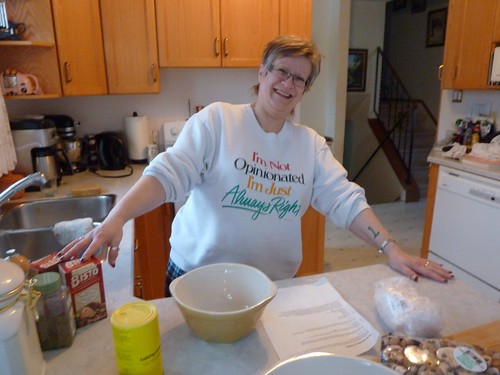
I'm happy to report that my pudding turned out fine. It was favourably reviewed both by a veteran steak and kidney pudding-eater and the S&K newbie, which just proves that even if you didn't grow up with the delicacy you can still come to appreciate it later in life if you are open and adventurous.
And there you have it - an Old Country food served up in the New Country. It was followed by a quiet and exceptionally frozen Christmas (-29 degrees, not including the wind chill), which was followed by an exceptionally Hellish trip home that went so badly it really deserves its own blog post, if I can muster the fortitude to relive it all. For now, suffice it to say that I arrived back a mere 26 hours late after two cancelled flights and a pitstop in Houston, Texas. 'Nuf said.
P.S. And because there's really nowhere else to put them, here are a few gratuitous photos of the prairie winter:
My four UK readers can skip this next bit, but those of you tuning in from North America might need a bit of a primer on pudding in its English sense. If you grew up in North America and didn't happen to have a whole side of your family that brought over many English foods and traditions when they hopped on the boat in 1950, then in your limited experience probably pudding refers only to a very specific sort of chilled milky gelatin-based sweet dessert flogged by Bill Cosby and popular in lunch boxes. Thus you might be slightly horrified at the thought of a bowl of chocolate pudding with chunks of beef and kidney floating in it. Fear not! In England the term pudding encompasses soooo much more than just the gloopy dessert.
(Jell-O related aside: In England, the neon-coloured clear wobbly stuff that we'd call Jell-O is generically called "jelly". And what do they call jelly? Weirdly, there is no specific word for the seedless fruity breakfast spread over here. Jelly just gets lumped in heartlessly under the "jam" label, which seems sad.)
But back to pudding. In one sense, "pudding" refers to the entire panoply of sweet stuff you might have at the end of a meal. In fact, the course called dessert is often called pudding here, which I find just charming. As in, "What's for pudding, mum?" (Another aside: It's definitely Mum with a U in England, not Mom with an O. And you can really hear the difference.) Sadly, the term pudding is slowly being supplanted by dessert, which I also find kind of sad. It's like hearing "fries" instead of "chips" or "cookies" instead of "biscuits" and feels like the last small tumble in the fall of the Empire.
More specifically, "pudding" can refer to a whole family of cakey sort of things that are cooked by steam, and can include both sweet and savoury options. Christmas pudding is probably the best known pudding out there, but other favourites include the most excellent Sticky Toffee Pudding, and the giggle-inducing Spotted Dick. On the savoury side the most famous is probably Yorkshire pudding, though it's not steamed but rather baked, so don't ask me why it's called pudding. Just accept that there's room for everybody under the pudding umbrella and be thankful if you've got a nice Yorkshire pudding on your plate, especially if there are lashing of gravy to go with it.
Steak and kidney is a favourite flavour combination that appears most frequently in pies. (Though even in England it's more likely you'll find steak and ale pie than steak and kidney.) In the pudding variety, the yummy filling of steak, kidney, onion, gravy and mushrooms is prepared in a pudding basin that's lined not with a standard pie-like pasty but a suet crust. Suet is the particular sort of fat that surrounds the kidneys and loin of cows, lamb and pigs and has a very high melting point, making it excellent for deep frying and pastry work. (It is also astonishingly high in saturated fat - 52% - so please don't plan on having it every day.) A suet crust consists of flour, ground suet, baking powder, a bit of salt and water, making a sticky dough that is used to line a pudding basin. The crust is then filled, covered in boiling water to seal the meat (and, critically, produce the gravy) topped with a lid of more suet crust and sealed up.
A selection of pudding basins in various sizes. A pudding basin is a heavy, deep ceramic bowl with a distinctive lipped edge at the top. The lip is there because a pudding gets covered with a pudding cloth during cooking (see upper left corner of the photo) and the pudding cloth is tied onto the basin with a string that tucks nicely under the lippy edge of the basin, so it doesn't slide off the top.
The Christmas Eve steak and kidney puddings of my childhood were always made by my grandmother in Moose Jaw. (To all UK Readers: Yes, Moose Jaw. And don't you get goofy about Saskatchewan place names because anyone who comes from a country with places called Boggy Bottom and Spitalin the Street frankly does not have a leg to stand on when it comes to mocking other people's place names.)
Mac the Moose of Moose Jaw. Taken in a Tim Hortons parking lot in Moose Jaw, on a chilly December morning when I was getting ready to drive about two hours across the frozen prairie and turn exactly once (left) to get to my destination. How Canadian Prairies is that?

Here's the Pudding Coach, set for the lesson.
It turns out steak and kidney pudding is really easy to make. The suet crust pastry is especially forgiving. You cut the suet (and optional butter for added lightness) into the flour and baking powder just like you were making pie crust, add the water, and mix it into a sticky dough. But there's less worry about overworking the dough than with pie crust, and it ends up more elastic - sort of half way between biscuit dough and bread dough. The filling requires nothing more than chopping the meat, onions and mushrooms into smallish chunks and dredging it all in a bit of seasoned flour before dumping into the lined pudding basin and topping.
The cooking of a pudding is an exceedingly cozy and relaxing event requiring one to hang about the house all day making sure that the pudding, which should be tucked into a big pot of simmering water on the back of the stove, is continually topped up with more boiling water. This takes about five hours, thus making the tending of a steamed pudding a perfect activity for a Sunday afternoon. It also leaves ample time to blog about the whole business while still making sure the the pudding doesn't boil dry.
I'm happy to report that my pudding turned out fine. It was favourably reviewed both by a veteran steak and kidney pudding-eater and the S&K newbie, which just proves that even if you didn't grow up with the delicacy you can still come to appreciate it later in life if you are open and adventurous.
My finished pudding
The slightly out of focus pudding eaters
And best of all, this particular pudding turned out to be large enough to provide the aforementioned treat. The next morning, it was carefully sliced and fried up in a particularly aged pan and served up for a stick-to-your ribs breakfast like no other.
Yes, I know this looks kind of like a pan full of dog food. You'll just have to trust me.
P.S. And because there's really nowhere else to put them, here are a few gratuitous photos of the prairie winter:
Look at the colour of that sky!

